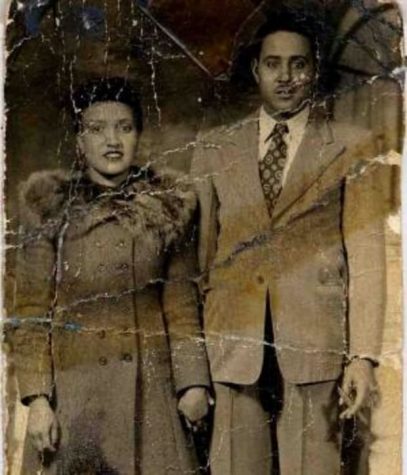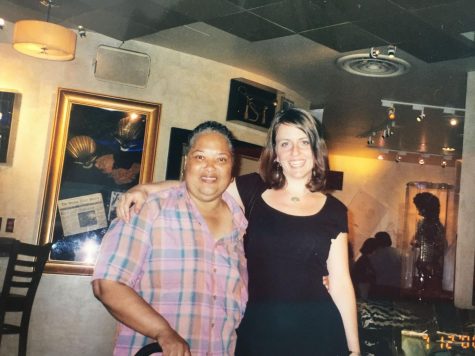Who is Henrietta Lacks and what have you done with her cells?
February 15, 2020
One of the biggest insecurities in people are that their life will pass away without them ever leaving anything behind. Everyday people get more and more stressed over the fact that when they die, they won’t be remembered and that because of that their life won’t really have mattered. A lot of these people spend years or even their entire lives working on projects and discoveries just for the one purpose of leaving behind a legacy. On the other hand, there are people who live their entire lives without even imagining the possibility that one day they will be responsible for something life changing. There are even some people whose legacies get taken away or passed off as other people’s without getting the recognition they deserve.
One of the greatest legacies in the science world started with one African American woman born in the 1920s, and only recently has she gotten the credit for the hundreds of scientific discoveries that have been discovered because of her contribution.
Loretta Pleasant was born in Roanoke Virginia on August 1, 1920, to John and Eliza Pleasant. When she was older, she officially changed her name to Henrietta, and when her mother died in 1924, she went to live with her grandfather and her first cousin, David Lacks. When Lacks turned fourteen she had her first child, Lawrence, with David Lacks, in 1935, and another child, Elsie, in 1939, before Lacks and Pleasant got married in 1941. The couple moved to Maryland and had three more children, David Jr., Deborah, and Joseph, living a standard life for a negro family in the 1900s. There is not that much record about Lacks’ early life, however in the beginning, the only thing that seemed out of the ordinary in their lives was that her first daughter Elsie, had to be put into a Negro hospital for the insane because of disabilities that were probably caused by a genetic disease. However, soon after this in 1951, Lacks started to have severe pain in her abdomen and when she went to a gynecologist at John Hopkins Hospital, she found out that she had a severe malignant tumor on her cervix.
The doctor she saw, diagnosed her with cervical cancer and immediately a biopsy was taken and she started to go through radiation treatments, the best treatment for such a serious cancer at this time. Unfortunately Lacks passed away on October 4, 1951, at 31 years old. However, while her family was mourning her death, the doctors who were in charge of examining her tissue sample from her biopsy, were less mourning her loss than celebrating the new discovery they made with her cells. The cells from Lacks’ biopsy were taken to a tissue lab that was close to John Hopkins hospital, and Dr. George Gray was the lead doctor. He was usually the head doctor in charge of collecting the cells of patients with cervical cancer that went to John Hopkins. It was in this lab when Ms. Lacks’ legacy was truly made to the scientific world. While all of the other cells from cervical cancer tumors that Dr. Gray received from the hospital died within 10-12 hours, dividing about twenty times and then being killed off by apoptosis or programmed cell death. Apoptosis usually happens in cells that aren’t working right and can spread their problems to other cells, and that’s usually what the body tried to do when the cancer is inside the body. However, the cells from Ms. Lacks’ tumor didn’t die, in fact they grew. Even though cancer cells usually divide uncontrollably, her cells divided even faster than most cancer cells. They multiplied every 20 hours, and to this day they still haven’t stopped dividing. This was also amplified by the fact that Lacks also had syphilis, an STD (Sexually Transmitted Disease), that damages the immune system and makes cancer cells grow even faster. Lack’s cells are the first immortal human cells to ever be seen in the entire history of the scientific world, and they have been the key factor in so many of the discoveries that have been made since the 1950s. From then on after her cells were analyzed, her cells have been known as the HeLa strain.
The immortality of her cells was pretty closely related to her having HPV. Most of the time when people get HPV of human Papillomavirus, it leads to cancer, but not always. HPV infects the host but outing its own DNA into the host, changing the DNA. This meant that HeLa cells had both Lacks’ DNA and some of the HPV’s DNA. When cells divide, they are supposed to have 46 chromosomes in humans for somatic cells or body cells, but cells from Lack’s tumor had about 70 chromosomes due to this mix of DNA. This ended up causing all types of new mutations that happened in her cells that caused her cells to be an immortal line.
Scientists today even think that HeLa cells could technically be known as their own species because they are kind of like single celled organisms that keep evolving and mutating. Because of how fast they reproduce and that fact that they don’t really die, they have been shipped worldwide and worked on in so many labs. In fact, some of the many ways that HeLa cells have helped modern science, is that they led to the creation of the polio vaccine and how close scientists are to wiping out polio from the entire world. They have also enabled scientists to start the human genome project and map out the chromosomes and genes in human DNA, and even help to create vaccines for HPV, helping to make the number of deaths because of cervical cancer a lot less. HeLa cells have been able to help with the development of the polio vaccine because her cells were pretty much the perfect hosts for the virus and they got infected really quickly. So, because of this scientists were able to infect a lot of HeLa cells with polio and from there they were able to experiment until they found a vaccine that would help the body to have an immunity towards polio that was safe for humans to use. This was such an important vaccine for American history because polio is a chronic or lifelong disease that is spread through contaminated water, and it destroys the nerve cells in the spine. Then, HeLa cells were able to help with the human genome project since scientists were trying to find a way to map out the different genes and traits they coded for in human DNA. By fusing HeLa cells with mouse cells scientists were able to perfect the process of searching and identifying greens, before they actually did it on fully human cells. Furthermore, HeLa cells helped to create an HPV vaccine because scientists discovered that her cells had one of the deadliest forms of the HPV virus in them, HPV-18. From there, they were able to analyze and figure out how HPV really worked in cells, figuring out a way to let the immune system block it/have a sort of immunity towards it. Thus because of the HPV vaccine, the number of women and young girls who have died from cancer related to HPV has went down by ⅔ percent, since 2008. Overall, HeLa cells have let scientists test out new substances and products as well, so see which ones could be safe for humans to use. All of these achievements sound pretty amazing as someone’s legacy especially someone whose life was ended too abruptly, but most of this research has been done without Lacks or her family even knowing about it.
Twenty years after the scientists secretly harvested her cancer cells, did HeLa’s family finally find about all of the discoveries that scientists have made about their mother, daughter, and sister. HeLa’s cells were used in so many different discoveries and there was almost no credit given to her and her amazing story until recently. Moreover, scientists even published HeLa’s entire genome online in 2013, without her family’s permission, causing a lot of problems and tension resulting in the data being taken down. However, the damage was already done and her family members wanted to know more than ever exactly what HeLa’s cells were being used for and of course they wanted to make sure that Lacks got the recognition she deserved. In 2010, HeLa was finally known for all that her cells did for science, when author Rebecca Skloot worked closely with HeLa’s daughter Deborah Lacks, and the rest of the Lacks family, to find out the true story of HeLa and published a book called “The Immortal Life of Henrietta Lacks.” This book follows the journey of Henrietta Lacks though her cancer and it also goes through all of the ways in detail of how and why HeLa cells are so special and the tremendous other ways of how HeLa cells have contributed to scientific breakthroughs. So if you are interested in learning more about HeLa, I definitely suggest reading this book or watching the movie adaptation released by HBO in 2017 and it will definitely open your eyes to all of the things that couldn’t have been possible today without HeLa cells.
Furthermore, in 2013 the Lacks family was able to make an agreement with scientists, which let them use the HeLa genome for science purposes only. Thus, Lacks not only helped with scientific research, but the story also led to a lot of controversy and arguments based off of morals, on whether the scientists were justified or not in their research without letting the Lacks’ family know about their research.
Overall, a person’s legacy is a big part of what defines them and in no way is it measured by if someone lived an extraordinary life or a basic life. Henrietta Lacks started out as a regular, underestimated African American girl, and now? Her cells are probably one of the most extraordinary things in scientific research. Thus, everything in life happens for a reason, and without Lacks cells being observed, the world would have been without a lot of the cures and vaccines they have today to keep us safe.
So, the next time someone is complaining about their lack of a legacy or how nothing ever happens in life, remember that some of the most important things in life start with something simple.


